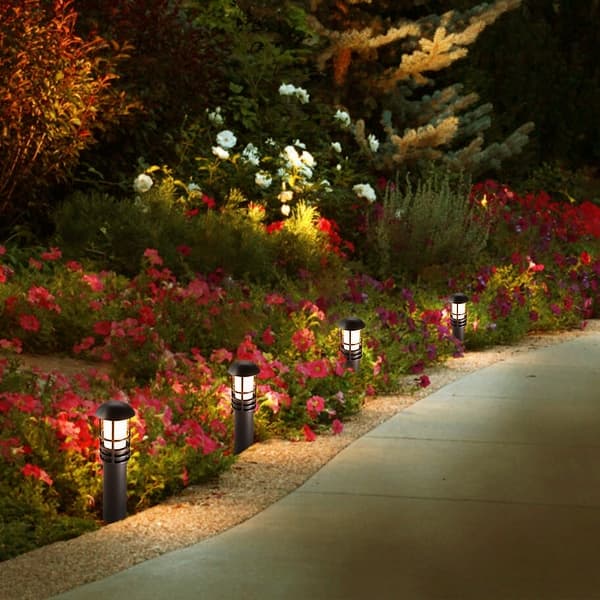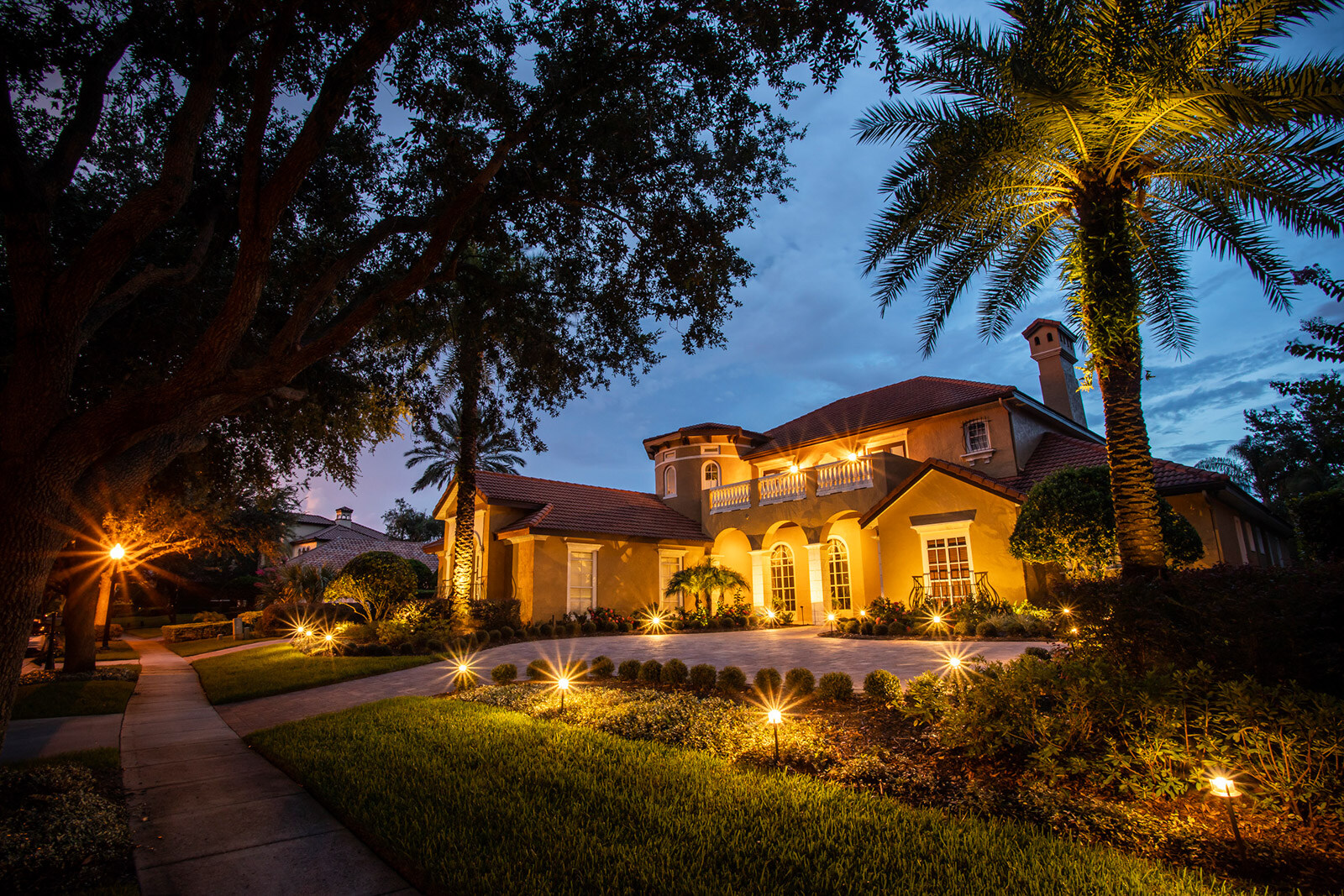Landscape Lighting Orlando to your home’s exterior can improve the safety and security of your outdoor living spaces. It can also enhance the beauty and curb appeal of your property.
Whether you’re washing your herringbone walkway with light or spotlighting your prized jasmine trellis wall, there are many types of landscape lights to choose from. The most important factor in selecting landscape lighting is determining your focal point and choosing illumination illuminate.

When a home is professionally lit, it catches the eye and captivates the senses. The beauty of a well-lit home is a key feature that increases the overall value of your estate. It will attract more buyers and impress your guests and neighbors as they drive by.
It will highlight your beautiful garden, pond, water fountains, and any other outdoor features that you may have. In addition, it will help your landscaping stand out at night and create a warm and welcoming environment that will make your guests feel at home.
In order to get the best landscape lighting, you need to ensure that the fixtures and bulbs are rated for outdoors. You want to avoid putting in a light fixture that is only rated for indoor use, as it could lose its finish or be damaged by the weather. This is why you should always have a professional install your landscape lighting so that it will last for years to come.
Landscape lighting can spotlight the architectural design of your home and its structures, like walls, gazebos, and flagpoles. You can also use it to add depth and dimension to a wall with a play of shadow and light. Additionally, you can utilize uplighting to highlight trees, sculptures, and other focal points on your property.
When potential buyers see a nicely lit home, they will be more likely to take a closer look at it and consider making an offer. This is because a beautifully-lit home looks more impressive and shows off its unique features in a way that a dark, unlit home cannot. It will also increase the safety and security of the property by illuminating the exterior and deterring burglars. This is why you should always appreciate the value of landscape lighting, even if you do not plan on selling your property anytime soon. This is one of the most cost-effective and long-lasting ways to improve your home’s aesthetic appeal. You will be able to enjoy your home’s stunning lighting for as long as you own it and will find that it enhances your quality of life in many ways.
When a pathway or walk is illuminated, it makes it easier to navigate the yard at night and reduces safety risks for family members and guests. Lights strategically positioned along pathways can also draw attention to features such as beautiful trees or garden sculptures.
When it comes to walkway lighting, choosing fixtures rated for outdoor use and made of quality materials is important. Cheaper fixtures not built to withstand the elements will rust or fade over time, creating an unsightly appearance. VOLT’s durable brass and copper fixtures are made to last, with premium internal components that make them an excellent value in the long run.
Depending on the function of your landscape lighting, you can use various fixture types and sizes to accomplish your goals. For example, spotlights are great for illuminating driveways and other high-profile areas, while path lights work well for sidewalks and flowerbeds. For the best effect, you should aim path lights downward and use shields to direct light where needed most.
You can even use lighting to highlight stairs, uneven areas, and other safety hazards on your property. Properly lit stairs and walkways can keep you and your guests safe and help prevent injuries, especially if children or elderly people are present.
With the right lighting, your yard can become a true gathering space. Landscape lighting can make cooking outside, lounging, and dining on the patio easier or just hanging out in the backyard at night. In addition, lighting around water features can create dreamy scenes.
A great way to create a welcoming and inviting entrance is with landscape lights highlighting a pathway or driveway. When these areas are properly illuminated, it’s easy for guests to find their way around and feel like a warm welcome home at night.
A well-lit entryway is also a great deterrent to crime. Landscape lights can be placed strategically to illuminate your front or back door and other security features. Doing this will keep intruders from getting too close and making your home less appealing to them.
The right landscape lighting can give you a stronger sense of security within your home. It can help deter crime by making your property more visible to intruders, and it can also improve safety for yourself and your guests by illuminating walkways and hazards like steps or raised edges.
Burglaries happen every 25.7 seconds in the United States, and a significant percentage of those incidents occur on residential properties. Investing in landscape lighting is one of the easiest ways to make your property less appealing to criminals, and you can choose from various fixtures designed for different purposes to achieve this goal.
Landscape lights can highlight features like fountains, ponds, flower gardens, and patios, or they can focus on the unique architecture of your house or other structures on your property, such as pergolas and cabanas. You can even light up a tree or a statue to create a bold statement and add an extra dimension to your outdoor space.
With the right landscape lighting, you can extend your use of your outdoor spaces after sundown. Suppose you’re hosting a party or spending time with family and friends. In that case, you can keep the festivities going into the night by adding lighting around outdoor seating areas, barbecue grills, or other activities.
Keeping up with the exterior of your home shows that you take pride in your property and want to make sure it’s well-maintained, which can increase your home’s value when it comes time to sell. Adding landscape lighting can further enhance your curb appeal, which will help you get noticed by prospective buyers.
If you have a large yard or property, it can be challenging to navigate at night without the help of lighting. With a good landscape lighting design, you can provide clear visibility for anyone coming up or down the driveway or sidewalk, such as delivery drivers or emergency responders. This can help reduce the risk of accidents and injuries for yourself and your guests, particularly older family members or children who are more likely to trip or fall in poor lighting conditions.
With well-placed landscape lighting, your home’s outdoor spaces can become the center of attention. The right lighting can highlight prized features like fountains, ponds, flower gardens, and patios, creating a bold, beautiful, and welcoming showcase. By incorporating up-lighting, down-lighting, and accent lighting, you can make a variety of moods in your yard. For example, a trellis can be highlighted with up-lighting to create a romantic feel, while backlighting opaque panels is great for making an artsy style. The color of your lights can also affect the atmosphere, with white lights ideally used for creating a more serene oasis feel and colored lights better suited to a more colorful and lively mood.
Landscape lighting can create the perfect ambiance for any event if you plan on entertaining in your backyard. By highlighting a space’s focal points and adding a warm, inviting glow to your outdoor living area, you can give guests an experience they will love and remember. The use of dimmers and lighting zones will further help to create the perfect setting for any occasion, whether it’s a romantic evening with dinner and drinks or an energetic party with music and dancing.
Properly placed and carefully thought-out landscape lighting can make your house look larger at night. This is because it will illuminate the dark areas of your home’s exterior, making it appear more spacious. This effect is even more noticeable if you have large windows.
Landscape lighting will not only enhance the beauty of your home, but it can add a sense of safety and security to your property. By illuminating walkways and other elements of your landscape, you can see where you are going at night, making it safer for you and your family members to enjoy the outdoors. You will also be able to avoid the hazards of walking in the dark, such as tripping and falling over objects or getting lost in your own backyard.

